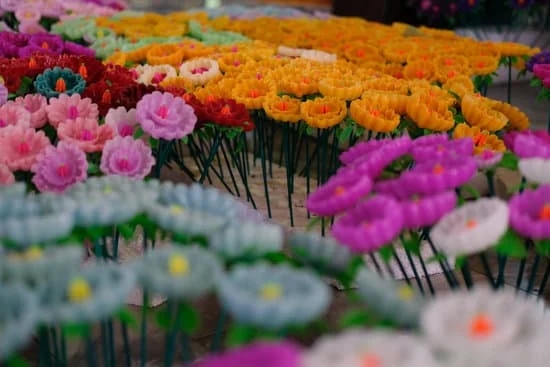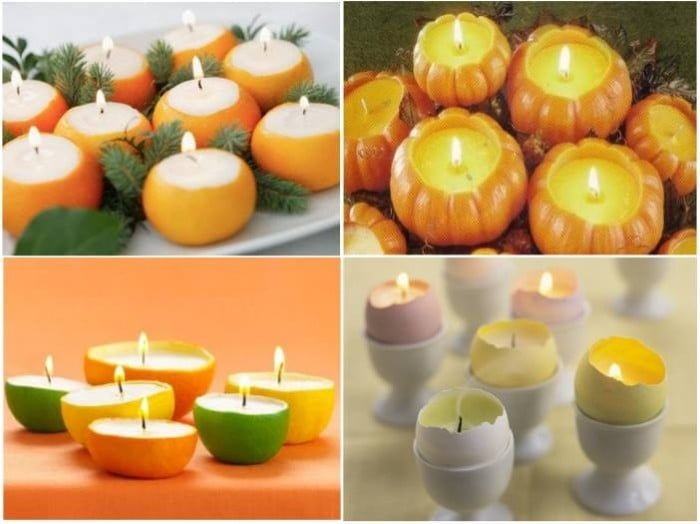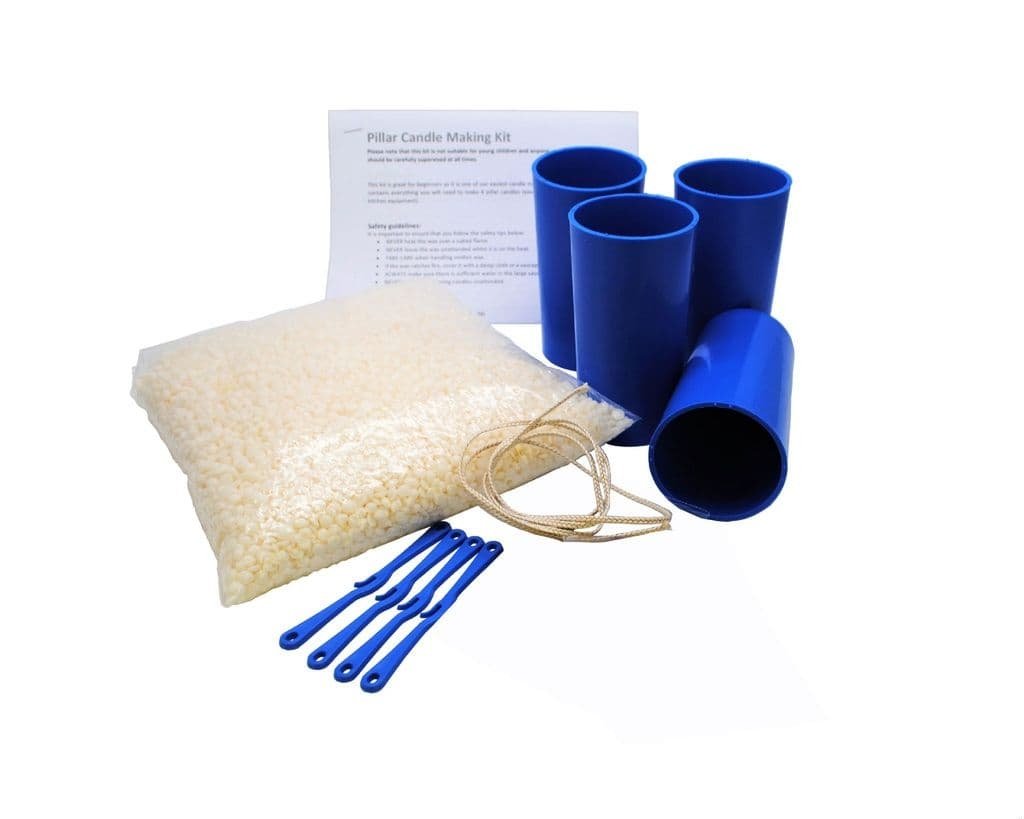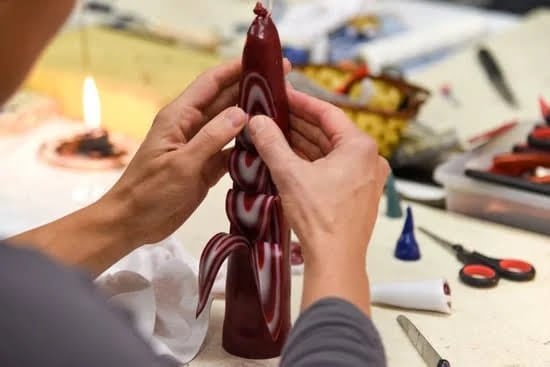In recent years, do-it-yourself (DIY) projects have been gaining popularity as people seek creative outlets and personalized touches for their homes. One of the most appealing DIY activities is candle making, a craft that combines artistry with functionality. Whether you’re a seasoned crafter or a beginner looking to explore a new hobby, learning how to make your own candles can be a rewarding and fulfilling experience.
To dive into the world of candle making, all you need are essential materials such as wax, wicks, fragrances, and molds. With the right supplies and a bit of creativity, you can create unique candles that reflect your personal style and preferences. If you’re interested in getting started on this creative journey, there are plenty of resources available online, including candle making instructions videos that provide step-by-step guidance on the process.
Homemade candles offer a variety of benefits over store-bought options, including the ability to customize scents, colors, and sizes to suit your tastes. Not only do DIY candles allow you to express your creativity, but they also serve as thoughtful gifts for friends and loved ones.
In the following sections of this article, we will delve into the step-by-step instructions for making your own candles at home, along with safety precautions to keep in mind and troubleshooting tips for common issues. So grab your materials and get ready to unleash your inner artisan with candle making.
Benefits of Making Your Own Candles
When it comes to the benefits of making your own candles, the advantages extend far beyond just the satisfaction of creating something with your own hands. Homemade candles offer a plethora of benefits over store-bought options that make them a popular choice among DIY enthusiasts and crafters alike. Here are some key reasons why diving into the world of candle making can be a rewarding experience:
- Customization: One of the primary advantages of making your own candles is the ability to customize them to suit your preferences. Whether you prefer a specific scent, color, or design, homemade candles allow you to tailor every aspect according to your liking.
- Quality Ingredients: When you make your own candles, you have full control over the ingredients used in the process. This means you can choose high-quality waxes, wicks, and fragrances that may not always be found in mass-produced candles.
- Cost-Effectiveness: In the long run, making your own candles can prove to be more cost-effective than constantly purchasing store-bought options. By buying supplies in bulk and reusing materials, you can save money while indulging in a creative hobby.
Moreover, homemade candles also make for thoughtful gifts that are unique and personal. Whether for birthdays, holidays, or special occasions, presenting someone with a handcrafted candle adds a touch of sentimentality that cannot be replicated by a mass-produced product from a store. With numerous benefits like customization, quality ingredients, cost-effectiveness, and sentimental value, it’s clear that making your own candles is a rewarding hobby worth exploring further.
Essential Materials Needed
When it comes to embarking on the journey of candle making, having the right materials is essential to ensure a successful and enjoyable experience. Here is a detailed list of supplies required for candle making:
Wax
The most crucial component of any candle is the wax. There are various types of wax available for candle making, including soy wax, paraffin wax, beeswax, and palm wax. Each type of wax has its own unique characteristics and benefits.
Soy wax is popular for its clean burn and eco-friendly properties, while paraffin wax is known for its strong scent throw. Beeswax is all-natural and produces a warm glow when burned, making it a favorite among many candle makers.
Wicks
Wicks are necessary to provide a pathway for the melted wax to travel up to the flame, allowing the candle to burn properly. Wicks come in various sizes and materials, such as cotton or wood wicks. The size of the wick should match the diameter of the candle you are making to ensure even burning. It’s important to select high-quality wicks that are lead-free and designed for the specific type of wax you are using.
Fragrances and Dyes
Adding fragrances or dyes to your candles can enhance the overall aesthetic and ambiance of your creation. Fragrance oils come in a wide range of scents, from floral and fruity to spicy and woody. Make sure to choose fragrances that are specifically formulated for candles to ensure proper scent throw when burned. Dyes are used to color your candles and can be customized to create unique hues that match your personal preferences or décor.
Having these essential materials on hand will set you up for success in your candle making endeavors.
Investing in quality supplies will not only result in beautifully crafted candles but also ensure safety during the process
Step-by-Step Candle Making Instructions
Candle making is a creative and rewarding hobby that allows individuals to personalize their living spaces with unique scents and decorative candles. Whether you are a beginner or seasoned crafter, learning the step-by-step candle making instructions can help you create beautiful candles right in the comfort of your own home. To assist you in this process, here is a comprehensive guide on how to make your own candles:
- Prepare your work area by covering surfaces with newspapers or protective sheets to catch any spills or drips from the hot wax.
- Gather all the essential materials needed for candle making, including wax, wicks, fragrance oils, colorants (if desired), a double boiler or microwave-safe container for melting wax, and molds.
- Melting the Wax: Place the desired amount of wax flakes in a heat-safe container over low heat on the stove or in the microwave. Stir occasionally until fully melted and smooth.
Once the wax is completely melted, it’s time to add fragrance oils and colorants if desired for scented and colored candles. Be sure to stir gently but thoroughly to evenly distribute the fragrance throughout the wax. Next, secure the wick at the center of your chosen mold and carefully pour the melted wax into the mold. Allow the candle to set and cool completely before trimming the wick and unmolding your beautifully crafted candle.
- Setting Your Candle: Let your candle sit undisturbed for at least 24 hours to ensure proper setting and curing before lighting.
- Clean up: Clean any spills or drips promptly using warm soapy water before they harden and become difficult to remove.
- Watch a Candle Making Instructions Video: For visual learners who prefer watching demonstrations rather than reading instructions, watching a candle making instructions video online can be helpful in mastering different techniques and tips for creating stunning candles.
By following these step-by-step candle making instructions, you can unleash your creativity and craft beautiful homemade candles that not only illuminate your space but also fill it with delightful fragrances of your choice. Remember to experiment with different colors, scents, and decorations to make each candle uniquely yours.
Safety Precautions
When engaging in the enjoyable hobby of candle making, it is crucial to prioritize safety throughout the entire process. Working with hot wax and open flames can present potential risks if proper precautions are not taken. By following some essential safety measures, you can ensure a safe and enjoyable candle making experience.
Protective Gear
Before starting your candle making project, make sure to equip yourself with necessary protective gear. Wear heat-resistant gloves to shield your hands from burns when handling hot wax or moving candle containers. Additionally, consider wearing an apron or old clothing to protect your skin and clothes from any accidental spills or splatters.
Proper Ventilation
It’s important to work in a well-ventilated area when melting wax and pouring candles. Proper ventilation helps dissipate any fumes that may be released during the heating process. Avoid working in enclosed spaces without adequate airflow to reduce the risk of exposure to potentially harmful vapors.
Fire Safety
Since candle making involves working with open flames, it is essential to have fire safety measures in place. Keep a fire extinguisher within reach, know how to use it, and have a clear evacuation plan in case of emergencies. Never leave melting wax unattended on heat sources, and always extinguish candles properly after use.
By incorporating these safety precautions into your candle making routine, you can enjoy the creative process with peace of mind. Remember that safety should always be a top priority when crafting beautiful homemade candles for yourself or as gifts for others. For more detailed guidance on safe candle making practices, consider watching a candle making instructions video for visual demonstrations of best practices.
Troubleshooting Tips
When it comes to candle making, it’s common to encounter a few hiccups along the way. One of the most frustrating problems that crafters face is uneven burning in their candles. This issue can be attributed to factors such as improper wick placement, poor quality wax, or an uneven surface while setting.
To prevent this problem, always ensure that your wick is centered and straight before pouring the wax into the mold. Additionally, using high-quality wax and ensuring a smooth setting surface can help promote even burning in your candles.
Another challenge that DIY candle makers often face is achieving a strong scent throw in their finished products. The scent throw refers to how well the fragrance of the candle disperses when it burns.
To enhance the scent throw of your candles, consider using high-quality fragrances specifically designed for candle making. Additionally, pay attention to the fragrance load recommended for the type of wax you are using and allow sufficient time for the scent to cure before lighting the candle.
In case you encounter issues with uneven burning or weak scent throw despite following these troubleshooting tips, don’t hesitate to refer to online resources for additional guidance. There are plenty of instructional videos available that provide step-by-step demonstrations on how to troubleshoot common candle making problems. These videos can offer valuable insights and practical solutions to help you overcome any challenges you may face in creating beautiful and fragrant homemade candles.
| Issue | Solution |
|---|---|
| Uneven Burning | Ensure proper wick placement and use high-quality wax |
| Weak Scent Throw | Use high-quality fragrances and allow sufficient curing time |
Decorating and Customization Ideas
When it comes to candle making, one of the most exciting aspects is the opportunity for creativity and personalization. Adding a touch of customization to your candles can turn them from simple homemade creations into unique pieces of art. One creative way to personalize your candles is by incorporating colors.
You can experiment with different shades of wax dye or even try layering colors for a visually stunning effect. From vibrant rainbow designs to elegant ombre gradients, the possibilities are endless when it comes to color customization.
In addition to colors, textures can also play a significant role in enhancing the aesthetic appeal of your candles. Consider using textured molds or adding embellishments like dried flowers, herbs, or glitter to create visually interesting patterns and designs on the surface of your candles. These tactile elements can add a whole new dimension to your candle making projects and make them stand out as truly one-of-a-kind creations.
To take your customization efforts even further, you can explore different embellishments and accessories to adorn your candles. From ribbons and lace to decorative charms and stickers, there are countless options available for adding that extra touch of personality to your homemade candles. By incorporating these creative elements into your candle making process, you can elevate your creations from simple décor items to thoughtful gifts or statement pieces that reflect your unique style.
| Customization Element | Description |
|---|---|
| Colors | Experiment with different shades of wax dye or layering colors for a visually stunning effect. |
| Textures | Use textured molds or add embellishments like dried flowers or glitter for visually interesting patterns. |
| Embellishments | Add ribbons, lace, charms, stickers or other decorative elements for a personalized touch. |
Resources and Further Reading
Are you eager to dive deeper into the art of candle making? Whether you’re a beginner looking to expand your skills or an experienced crafter seeking new techniques, there are plenty of resources available to guide you on your candle making journey. From websites and books to online videos, these platforms offer valuable insights and inspiration for creating beautiful homemade candles.
One excellent resource for learning more about candle making is through online videos. There are numerous instructional videos available that walk you through the entire process, from selecting the right materials to mastering different pouring techniques. These videos provide a visual guide that can be especially helpful for beginners who prefer a step-by-step demonstration. By watching experienced candle makers in action, you can pick up valuable tips and tricks that will enhance your own crafting abilities.
For those who prefer to learn at their own pace through reading, there are also plenty of books dedicated to candle making. These books cover a wide range of topics, including wax types, fragrance mixing, wick selection, and troubleshooting common issues.
Whether you’re interested in traditional methods or modern trends like soy or beeswax candles, there’s a book out there that can satisfy your curiosity and fuel your creativity. Consider checking out reputable sources recommended by experienced crafters to ensure you’re getting accurate and reliable information as you delve into the world of candle making.
Conclusion
In conclusion, the art of candle making is not only a fulfilling hobby but also a way to create unique and personalized products for your home or as gifts. By following the step-by-step instructions outlined in this blog post and utilizing the essential materials mentioned, you can embark on your own candle making journey with confidence.
The benefits of making your own candles extend beyond just the satisfaction of creating something by hand – they also offer a healthier alternative to store-bought options, as you have full control over the ingredients used.
It is crucial to prioritize safety precautions when working with hot wax and open flames during the candle making process. By being mindful of potential hazards and taking necessary measures to prevent accidents, you can enjoy this creative activity without any worries. Additionally, troubleshooting tips provided in this guide will help you address any challenges that may arise along the way, ensuring that your homemade candles turn out perfect every time.
For further inspiration and detailed instructions, consider exploring online resources such as instructional videos dedicated to candle making. Watching experts demonstrate techniques and share insider tips can enhance your skills and expand your knowledge in this craft. So, gather your supplies, set up a safe workspace, and let the flickering glow of homemade candles illuminate your space with warmth and beauty. Start your candle making journey today with the guidance of a candle making instructions video.
Frequently Asked Questions
How to Make Candles Step by Step?
To make candles step by step, you will need to gather the necessary materials such as wax, wicks, fragrance oils, and coloring agents. Melt the wax using a double boiler or microwave, then add in the fragrance and color.
Place the wick in your container and carefully pour the melted wax. Allow it to cool and trim the wick before lighting.
What Not to Do When Making Candles?
When making candles, it is important not to overheat the wax as this can be a fire hazard. Additionally, do not leave melting wax unattended on direct heat sources. To ensure safety, avoid using materials that are not designed for candle making such as glass containers that are not heat-resistant.
What Is the Formula for Candle Making?
The formula for candle making involves choosing the right type of wax based on your preferences – soy, paraffin, beeswax, etc. You will also need to calculate the amount of fragrance oil based on the volume of wax being used.
As for coloring agents, a little goes a long way so start with small amounts and adjust as needed for desired color intensity. Lastly, consider the size and type of wick you select to ensure proper burning of your candle.

Welcome to my candle making blog! In this blog, I will be sharing my tips and tricks for making candles. I will also be sharing some of my favorite recipes.





